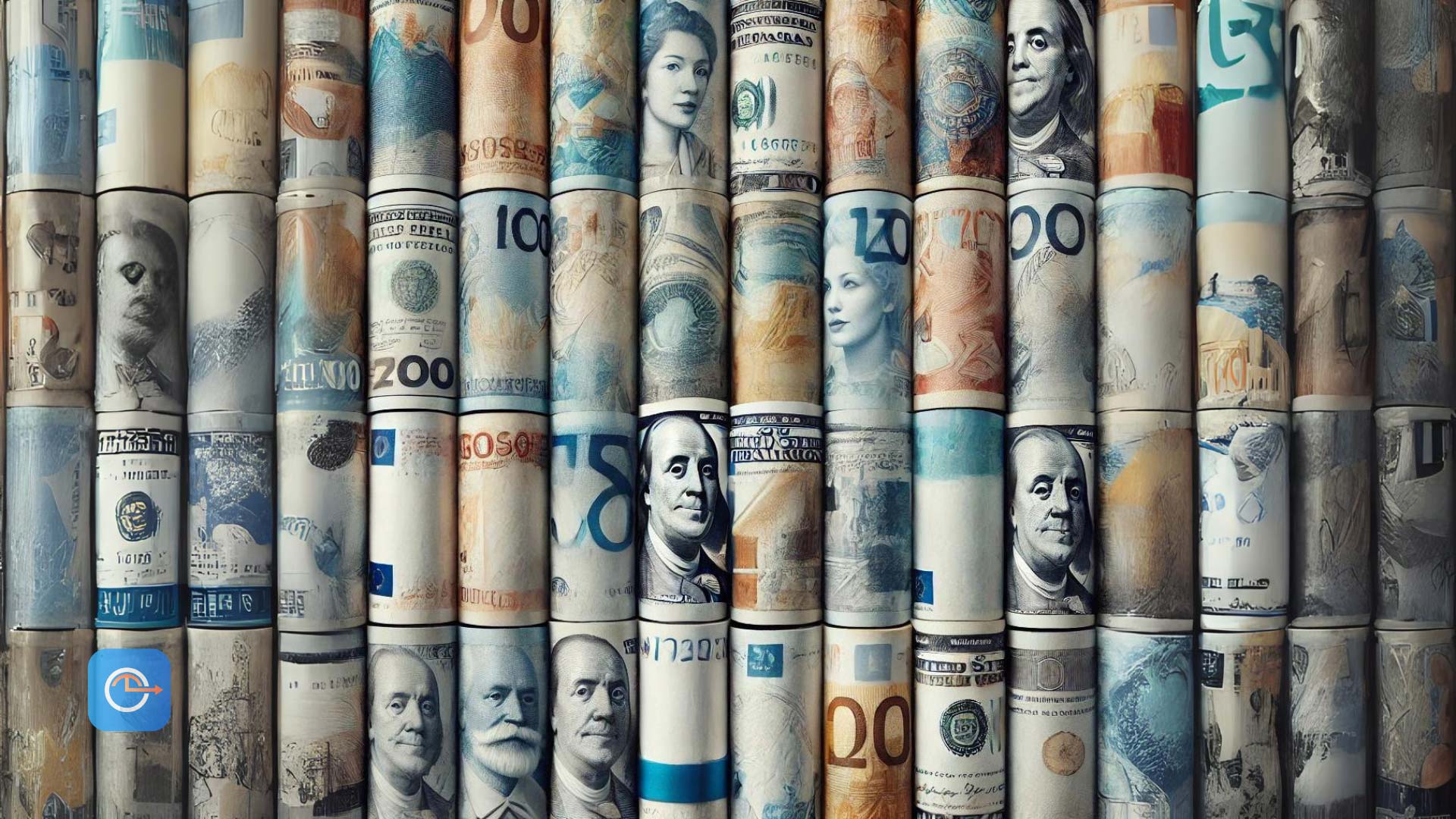
The foreign exchange market, commonly known as the forex market, is the largest and most liquid financial market in the world. With a daily trading volume exceeding $6 trillion, it offers numerous opportunities for traders to profit from currency fluctuations. This beginner’s guide will help you understand the basics of the forex market, key concepts, and strategies to get started with currency trading and forex funded accounts.
What is forex trading? Key concepts and currency pairs explained
Forex trading involves the exchange of one currency for another with the aim of making a profit from changes in exchange rates. Currencies are traded in pairs, such as EUR/USD or GBP/JPY. The first currency in the pair is known as the base currency, and the second is the quote currency. When you trade forex, you are simultaneously buying one currency and selling another.
Example
If you believe the euro will strengthen against the US dollar, you would buy the EUR/USD pair. If the exchange rate rises, you can sell the euros back for a profit.
Understanding forex trading key concepts and currency pairs
Currency Pairs in forex trading
Currency pairs are the foundation of forex trading. They are quoted in terms of their relative value, with the first currency (base) compared to the second currency (quote).
- Major pairs: Include the most traded currencies, such as EUR/USD, USD/JPY, GBP/USD, and USD/CHF.
- Minor pairs: Include less frequently traded pairs that do not involve the US dollar, such as EUR/GBP or AUD/NZD.
- Exotic pairs: Include one major currency and one currency from an emerging or smaller economy, such as USD/TRY or USD/SGD.
How to calculate pips in forex trading the smallest price movement
A pip (percentage in point) is the smallest price movement in a currency pair. For most pairs, one pip equals 0.0001. For example, if the EUR/USD moves from 1.1000 to 1.1001, it has moved one pip.
Leverage in forex trading how to amplify profits and manage risks
Leverage allows traders to control a larger position with a smaller amount of capital. For example, 1:100 leverage means you can control $100,000 with just $1,000. While leverage can amplify profits, it also increases the risk of significant losses.
The spread in forex trading understanding the cost of trading
The spread is the difference between the bid (buy) and ask (sell) prices of a currency pair. It represents the cost of trading and can vary depending on market conditions and the currency pair being traded.
How the forex market works trading sessions and time zones
The forex market operates 24 hours a day, five days a week, across different time zones. It consists of three main trading sessions:
- Asian session: Opens in Tokyo and includes trading in Asia and the Pacific.
- European session: Opens in London and includes trading in Europe.
- North american session: Opens in New York and includes trading in North and South America.
Key market participants in forex trading central banks
- Central banks: Influence currency prices through monetary policy and interventions.
- Commercial banks: Facilitate large transactions for clients and engage in proprietary trading.
- Corporations: Conduct foreign exchange transactions for international trade and investment.
- Investment managers: Manage large portfolios and hedge currency risk.
- Be Individual traders who participate in the market through online forex brokers.
Developing a forex trading strategy technical analysis tips
Technical analysis involves studying price charts and using indicators to identify trends and potential prop trading firms opportunities.
- Moving averages: Use moving averages (e.g., 50-day and 200-day) to identify trend directions and potential entry points.
- Support and resistance: Identify key support and resistance levels on the price chart to determine entry and exit points.
- Candlestick patterns: Analyze candlestick patterns to identify potential reversals and continuation signals.
Fundamental analysis in forex trading evaluating economic indicators
Fundamental analysis involves evaluating economic indicators, news, and events that can impact currency prices.
- Economic indicators: Track key economic indicators such as GDP, inflation, and employment reports.
- Central bank policies: Stay updated on central bank decisions and monetary policies that can affect currency prices.
- Geopolitical Events: Monitor geopolitical events and news that can influence market sentiment and currency movements.
Risk management strategies for forex trading stop-loss orders
Effective risk management is crucial for long-term success in forex trading.
- Set stop-loss orders: Use stop-loss orders to limit potential losses on each trade.
- Position sizing: Trade with appropriate position sizes relative to your account balance to manage risk effectively.
- Diversification: Diversify your trades across different currency pairs to spread risk.
Practical Tips for Forex Trading
Stay informed
Stay updated with market news and economic events that can impact currency prices. This helps you make informed trading decisions and stay ahead of market moves.
- News feeds: Subscribe to reliable financial news sources for real-time updates.
- Economic reports: Pay attention to major economic reports and their potential impact on the market.
Keep emotions in check
Forex trading can be highly volatile and emotional. Develop techniques to manage stress, stay calm, and make rational decisions.
- Mindfulness: Practice mindfulness techniques such as meditation and deep breathing to stay focused and composed.
- Avoid FOMO: Resist the urge to make impulsive trades based on the fear of missing out (FOMO).
Example of a successful forex trade using technical analysis
Let’s walk through a detailed example of a successful forex trade using a technical analysis strategy.
- Analyzing the market: You decide to trade the USD/JPY currency pair. After analyzing the market, you identify an uptrend supported by positive economic data from the US.
- Setting up the trade: Using your trading platform, you identify a potential entry point at 110.00 based on moving averages and support levels.
- Placing stop-loss and take-profit orders: To manage risk, you place a stop-loss order at 109.50 (50 pips below your entry) and a take-profit order at 111.00 (100 pips above your entry).
- Executing the trade: Over the next few days, positive market sentiment drives USD/JPY higher, reaching your take-profit level of 111.00.
- Calculating the profit: Your trade is automatically closed at the take-profit level, resulting in a profit of 100 pips. If you traded one standard lot (100,000 units), this means a profit of $1,000 (100,000 x 0.01).
Avoiding common mistakes in forex trading tips for better decisions
Even experienced traders can make mistakes, but learning to avoid common pitfalls can help you trade more effectively.
Overtrading
Trading too frequently can lead to increased transaction costs and emotional fatigue. Focus on high-quality trades rather than quantity.
Ignoring risk management
Failing to manage risk can lead to significant losses. Always use stop-loss orders and position sizing to protect your capital.
Chasing the market
Avoid the temptation to chase the market after missed opportunities. Stick to your trading plan and wait for the next setup.
Understanding the forex market is the first step towards successful currency trading. By learning key concepts, developing effective trading strategies, and following practical tips, you can unlock profitable opportunities in the forex market.
Remember, successful trading is a journey that involves continuous learning, discipline, and adaptation. Stay committed to your goals, keep learning, and apply the strategies and tips outlined in this guide to enhance your trading skills and achieve your financial objectives. Participating in a prop trading challenge can also provide a structured and competitive environment to hone your skills and achieve consistency in your trading performance.





















